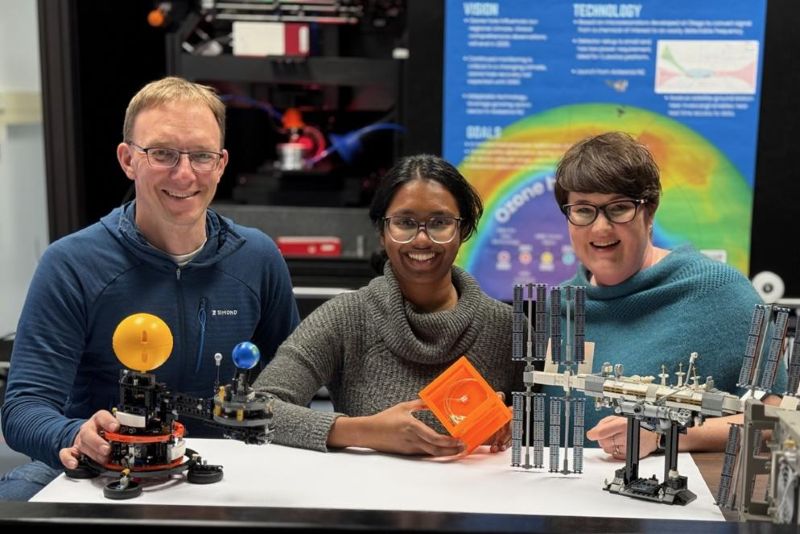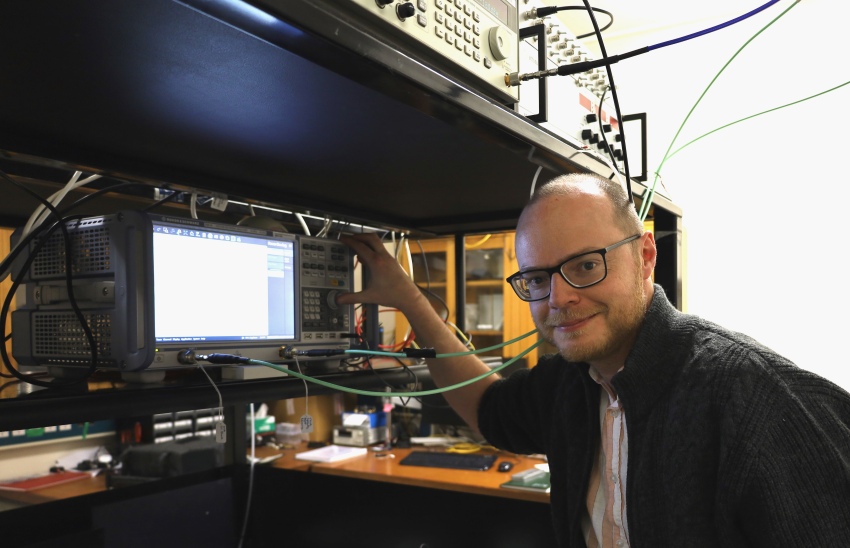Could photonics solve your problem?

https://www.nbr.co.nz/story/could-photonics-solve-your-problem
Report values ‘hidden tech’ industry in NZ at $1.2b.
Photonics has been called the engine of 21st-century economies but most people don’t know what it is. A new report out today hopes to change that.
“People understand that electronics is important and pervasive but they don’t understand that much of electronics is gradually being replaced by photonics,” says the report’s co-author Dr John Harvey, who is president of the Australia New Zealand Optical Society (ANZOS), founder of Auckland-based specialist laser manufacturer Southern Photonics, and a physicist at the University of Auckland.
Products that rely on photonics – the creation, manipulation, and use of light – include smartphones, computers, fibre-optic communication systems, laser engraving and cutting machines, drones, and medical devices. (All those Zoom-mediated meetings during lockdown couldn’t have been supported by pre-fibre optic internet.)
The report, Photonics in Australia & New Zealand: Lighting Economic Growth, is the first to measure the size of the photonics industry in New Zealand and Australia. It identified 121 New Zealand companies involved in the industry, together employing 2530 people and accounting for about $1.2 billion of economic activity, which gives an estimated gross value added per employee of more than $150,000. By comparison, New Zealand wine exports were valued at$1.93b in 2019.
In Australia, the photonics industry is comparable to the country’s farm gate dairy production, with 465 companies, 9540 employees and an economic contribution of $AU4.2b. In both countries, the sector comprises a few large companies and many SMEs.
The report used a methodology that counts not only companies whose main activity is manufacturing photonics, but also any portion of other companies’ output that relies on photonics technology. New Zealand’s industry is focused on developing products and services enabled by photonics.
Harvey said: “There are some companies that are exclusively photonics … but the biggest contribution to the economy is the proportion it contributes to big companies. So, for example, for Fisher & Paykel Healthcare, only a small proportion of [its employees and value] is included in the report, but some of their production processes couldn’t operate without specialist photonic instrumentation, which they produce themselves.”
‘Let us solve your problems’
The companies included in the report’s photonics headcount fall in other recognised tech sectors, the largest portion by value in communications. Top contributing companies to the New Zealand photonics economy include Kordia, Chorus, optical fibre installers Ultrafast Fibre and Enable Networks, Cubic Defence NZ (military training systems), and Compac Sorting (fruit sorting machinery), all employing more than 80 staff relating to photonic activities.
In Australia, the big contributors are Vision stream, Vocus Communications, Telstra, Servicestream (optical fibre installers), Finisar (optical communications products manufacturer), and Prysmian (cable manufacturer), all with photonic-apportioned staff numbers of more than 100.
The rationale for pulling together companies using photonics is to raise the profile of this sector, which report authors said has huge potential to drive growth in high-value manufacturing.
Harvey said: “We have this resource and if companies don’t realise that problems they have could be solved in this way, then they won’t take advantage of those new technologies.”
The report aimed to describe the current landscape, provide a baseline for measuring future growth, and “generate networking amongst companies, not just with universities and researchers, but between companies who don’t realise that other companies have solved similar problems in a particular way [using photonics],” he said.
Southern Photonics – which produces, from its Queen Street HQ in Auckland, specialised lasers chiefly for use in research labs around the world – is typical of photonics manufacturers around the world: it imports a lot of its key components from Asia and then assembles its products, which are then sold into countries such as the US.
Talent pool
Harvey also heads the industry outreach and commercialisation team of the Dodd-Walls Centre, a national centre of research excellence hosted by the University of Otago (the centre and ANZOS commissioned the report). Centre director Professor David Hutchinson said New Zealand is unusual in having a large number of physicists with expertise in photonics, largely because of the legacy of Dan Walls, one of two leading physicists after whom the centre is named.
The centre turns out about 100 graduates a year and one of its roles is to act as a talent pool for industry. It also coordinates collaborative research into photonics-based products that have the potential to be exported around the world.
Applications on the horizon include the use of laser-based measurement lidar for ball-tracking in cricket and golf, and embedding fibre optic ‘straingauges’ into Singapore metropolitan rapid transit rails that can indicate issues with passing trains – for example, a spent bearing.
The same strain gauge technology could be used in construction to instantly diagnose structural damage from earthquakes.
Another recent project with Meat Industries New Zealand – born from a serendipitous conversation – is looking at how to use photonics to measure markers of meat quality on the meat chain in real time.
Much local photonics activity is around servicing agriculture or leveraging it to develop photonics-based instruments in agritech. One such example isEngender Technologies, co-founded by Cather Simpson, a physics and chemistry professor at the University of Auckland. Engender uses lasers to sort bull sperm by sex and was bought by multinational CRV-Ambreed in 2017. Simpson went on to found Orbis Diagnostics, which uses photonics to provide a composition alanalysis of every cow’s milk at each milking with the aim of sorting cows by productivity.
“Once you scratch under the surface, there are photonic solutions that are used in a vast array of different businesses,” Hutchinson said.
He said the potential for growth was considerable. “I don’t think we’re going to have the individual multibillion-dollar companies, but we could end up providing reasonably large-scale medium-sized enterprises that feed into those and the aggregate of that could be substantial.”
Taking off
Coherent Solutions was founded as a spin-out company from Southern Photonics(itself a University of Auckland spin-out) in 2012 and has grown steadily to now employ about 40 staff in Auckland and four in the US. Initially specialising in test equipment for coherent optical communications systems, the company now manufactures equipment for electro-optical semiconductor testing,lidar, and hypervelocity measurements, and free space optical communicationssystems.
Its customers include one of the world’s largest semiconductor manufacturers, NASA, a number of aerospace and defence companies, telecom companies and, lately, motor companies developing self-driving vehicles.
Co-founder and chief executive Andy Stevens told NBR the company is poised to take off – figuratively and literally. “We expect to be doing over $100million in revenue in six to eight years, maybe double that. The market is very large so there’s a great untapped opportunity,” he said.
Space was the “next frontier” in optics communications, he said, as that is how satellites talked to each other. “We had one of the directors of NASA come and visit us and he said, ‘we want to be able to take videos of robots going down in the lava tubes in Mars and for children to be able to view it in their classrooms via livestreams’.”
Coherent Solutions grew organically until 2017, when it raised $3m from New Zealand investors, but Stevens expects its next capital raise will need to comefrom overseas investors due to its size. He said he would start talking to potential investors later this year.
Stevens has been involved in many tech startups, first in his homeland of Scotland and then in the US, where he spent 11 years before moving to New Zealand. Hesaid the country’s existing talent pipeline and the low startup costs for photonics made it a good place to be based.
“The thought of setting up a tech startup company in New Zealand sounds very crazy if you’re living in California, but from where I am now I think this is a very good place to be setting up tech companies. The good thing about the photonics market is because it’s so diverse, a particular technology might come along and replace photonics in one market, but there’s always going to be another one.
The report said, “independent international analysis identifies ten majorphotonics-enabled market segments with a combined global market value of $US1.8trillion covering end use sectors as diverse as advanced manufacturing, biomedical, defence and communications, underpinning 11% of the global economy”.
Harvey said photonic startups were increasingly gaining support of venture capital which formerly gravitated to other tech fields such as biotech, which he saw as a recognition of its value.
“When we export milk powder, we sell it for about $7 a kilo. But a photonics-based device can sell for as much as $10,000 a kilo.”
He hoped that a follow-up report in two years’ time might reveal similar growth as in the UK, where photonics had grown more than twice as fast as the wider manufacturing sector.







